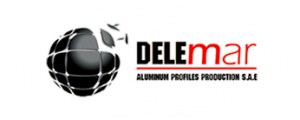Hypertension, also known as hypertension, is an usual problem that influences millions of individuals worldwide. It is often described as the “quiet killer” since it can have no signs and symptoms and also yet lead to major health and wellness difficulties. For that reason, early discovery and appropriate medical diagnosis of high blood pressure are critical in handling this persistent problem. In this short article, we will certainly explore the numerous techniques and tests made use of to diagnose hypertension, in addition to the signs and treatment options available.
Diagnosis of Hypertension
The diagnosis of hypertension involves several steps as well as analyses to identify an individual’s blood pressure degrees and also total health and wellness standing. The process typically consists of:
1. Measurement of High Blood Pressure: The initial step in detecting high blood pressure is the measurement of blood pressure. This is normally done utilizing a sphygmomanometer, a tool that includes a blow up cuff and a stress gauge. The dimension supplies 2 analyses: systolic stress (top number) and also diastolic stress (bottom number). A normal high blood pressure reading is around 120/80 mmHg.
2. Several Blood Pressure Readings: A solitary blood pressure analysis may not be enough to identify hypertension. For that reason, several analyses are usually taken control of an amount of time, on different days, and also in various settings (e.g., at home as well as at the doctor’s workplace). This helps to rule out the possibility of a momentary high reading due to stress or various other variables.
3. Classification of High Blood Pressure: When several blood pressure readings are obtained, the outcomes are categorized into different categories. The American Heart Organization (AHA) classifies high blood pressure right into four classifications: typical, raised, phase 1 high blood pressure, and stage 2 high blood pressure. This classification is based upon the standard of 2 or even more readings taken on 2 or even more occasions.
- Normal: Blood pressure is less than 120/80 mmHg
- Elevated: Blood pressure is between 120-129/ less than 80 mmHg
- Phase 1 Hypertension: High blood pressure is in between 130-139/80 -89 mmHg
- Stage 2 Hypertension: High blood pressure is 140 or higher/90 or greater mmHg
4. Additional Examinations: Sometimes, added tests might be advised to evaluate the influence of high blood pressure on a person’s health and wellness. These examinations might consist of blood tests to inspect cholesterol and blood sugar level levels, urine examinations to assess kidney function, and also electrocardiograms (ECGs) to examine heart wellness.
Signs of Hypertension
High blood pressure is frequently described as a quiet problem since it might not present any kind of visible signs in its beginning. However, as the high blood pressure surges and also continues to be unrestrained, certain signs may emerge. These symptoms can include:
- Headaches
- Wooziness
- Lack of breath
- Breast discomfort
- Blurred vision
- Exhaustion
It is necessary to note that these signs and symptoms are not unique to hypertension and also can be credited to various other medical conditions too. For that reason, it is vital to undergo normal high blood pressure checks to ensure very early detection and also proper monitoring of hypertension.
Therapy of High blood pressure
The treatment of hypertension concentrates on reducing high blood pressure levels and also decreasing the danger of linked health complications. The therapy que es variquit para que sirve plan might vary depending upon the severity of visiorax en gotas high blood pressure as well as a person’s overall health. Typical therapy methods consist of:
- Way of life Modifications: Making healthy lifestyle changes is often the first line of defense versus high blood pressure. This consists of adopting a well balanced diet abundant in fruits, vegetables, and entire grains, minimizing sodium intake, participating in normal physical activity, preserving a healthy weight, limiting alcohol intake, and also avoiding tobacco use.
- Medicine: In some cases, way of life alterations alone may not suffice to control blood pressure. In such circumstances, healthcare professionals may suggest drug to aid lower blood pressure. There are numerous sorts of drugs available, including diuretics, beta-blockers, ACE preventions, ARBs, and also calcium channel blockers. The choice of medicine relies on different elements, including the person’s total health and wellness, possible adverse effects, and also medicine interactions.
- Tracking as well as Follow-up: When detected with hypertension, regular tracking of blood pressure is critical. This can be done in the house using a house high blood pressure monitor or by going to a healthcare expert. Routine follow-up check outs are also vital to evaluate the effectiveness of the therapy plan, readjust medicine does if necessary, and address any type of worries or inquiries.
Conclusion
Hypertension is a common condition that needs correct medical diagnosis, monitoring, as well as therapy to avoid difficulties and preserve overall health and wellness. Routine blood pressure checks, lifestyle adjustments, and adherence to prescribed medications are essential in handling hypertension successfully. If you experience any kind of symptoms or have problems concerning your high blood pressure, it is vital to consult a medical care professional for an exact diagnosis and also ideal care.
